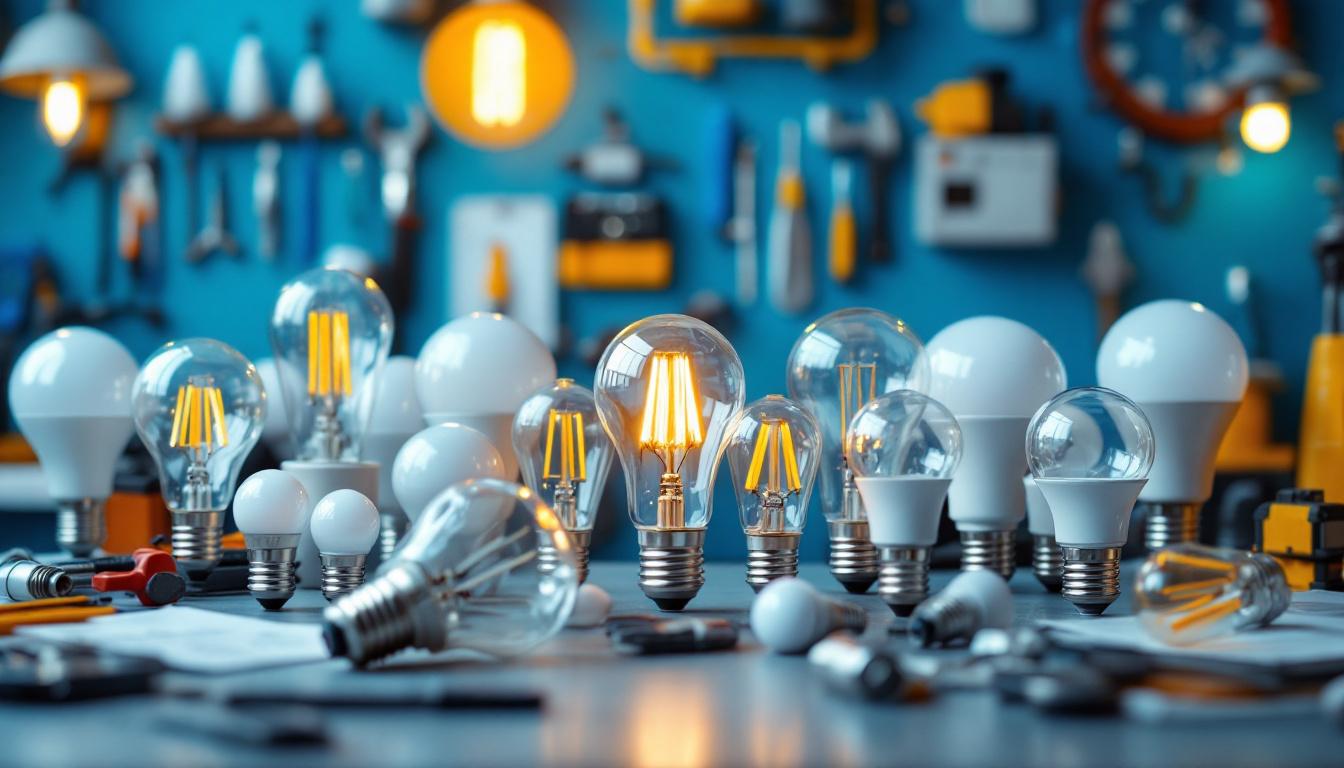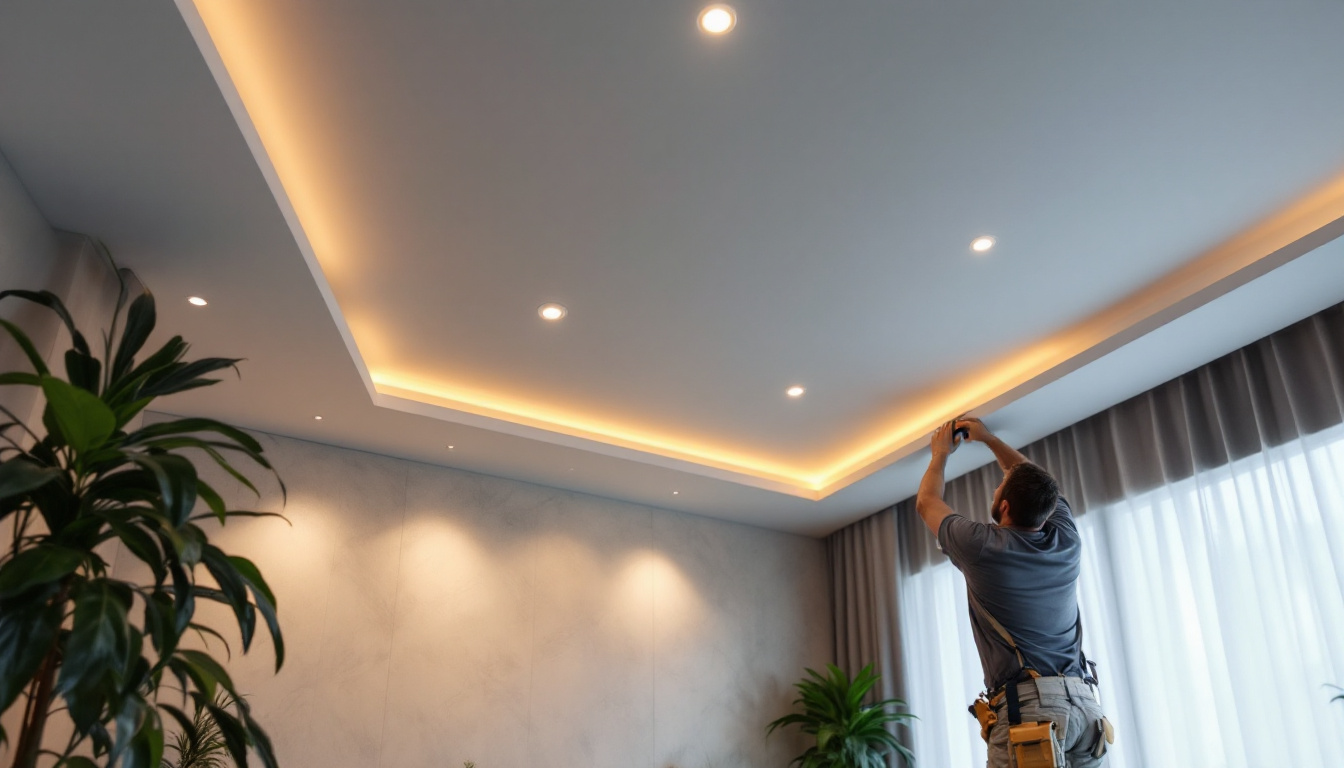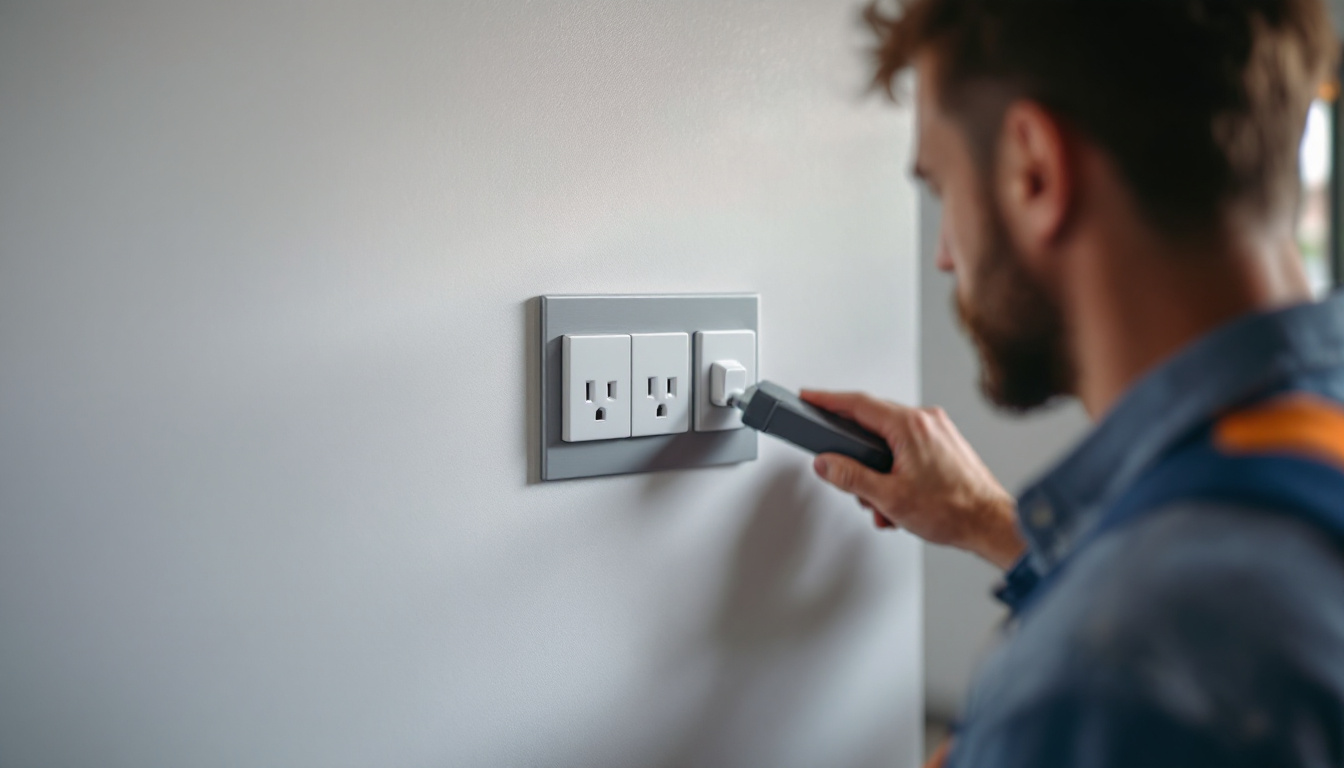
Lighting contractors operate in a dynamic industry where technology and client expectations continuously evolve. One of the fundamental components of any lighting project is the light bulb itself. Over the decades, light bulbs have transformed from simple incandescent filaments to sophisticated, energy-efficient solutions. Understanding this evolution is critical for contractors aiming to deliver optimal lighting solutions that balance performance, aesthetics, and sustainability.
Initially, incandescent bulbs dominated the market due to their simplicity and warm light quality. However, their inefficiency—converting only about 10% of energy into visible light—prompted the development of alternatives. Fluorescent lamps offered better energy efficiency but came with challenges such as flickering and mercury content. Today, LED technology has revolutionized lighting, providing superior energy savings, longevity, and versatility.
For lighting contractors, staying abreast of these advancements is not merely about technical knowledge but also about advising clients on cost savings, environmental impact, and compliance with evolving regulations. The shift towards LEDs and smart lighting systems exemplifies how the industry is moving towards integrated, intelligent solutions.
Moreover, the emergence of smart lighting systems has introduced a new layer of complexity and opportunity for contractors. These systems allow for remote control and automation, enabling users to adjust lighting based on their needs or preferences, enhancing both convenience and energy efficiency. For instance, smart bulbs can be programmed to dim or change color according to the time of day, creating a more dynamic and personalized environment. This adaptability not only meets the functional requirements of modern spaces but also aligns with the growing consumer demand for customizable and interactive home experiences.
Additionally, the integration of lighting with other smart home technologies, such as security systems and climate control, is becoming increasingly common. This interconnectedness facilitates a holistic approach to home automation, where lighting can be synchronized with other systems to enhance safety and energy management. As these technologies continue to evolve, lighting contractors must not only understand the technical specifications of various products but also the broader context of how these systems can work together to create smarter, more efficient living and working environments.
Incandescent bulbs produce light by heating a tungsten filament until it glows. They are known for their warm, inviting light and excellent color rendering index (CRI), typically close to 100. However, their energy inefficiency and short lifespan—often around 1,000 hours—make them less favorable in modern installations.
Despite these drawbacks, incandescent bulbs still find niche applications where color quality and dimming performance are paramount, such as in theatrical lighting or specialized residential settings. Lighting contractors should recognize when these bulbs serve a purpose, particularly in retrofit projects where preserving the original ambiance is desired.
Halogen bulbs are a refined version of incandescent lamps, containing halogen gas that increases efficiency and lifespan. They emit bright, crisp light with excellent color rendering and are fully dimmable. Their compact size allows for versatile fixture designs, making them popular in track lighting, accent lighting, and automotive applications.
However, halogen bulbs operate at higher temperatures and consume more energy than LEDs, which limits their use in energy-conscious projects. Contractors must weigh the benefits of halogen’s light quality against its operational costs and heat output.
Fluorescent lamps generate light through an electric discharge in mercury vapor, exciting phosphors that emit visible light. They are significantly more efficient than incandescent bulbs, with lifespans ranging from 7,000 to 15,000 hours. Commonly used in commercial and industrial settings, fluorescents provide diffuse, even lighting suitable for large spaces.
Despite their efficiency, fluorescent bulbs have drawbacks including the presence of mercury, which requires careful disposal, and issues with flicker and color rendering. Additionally, their performance can degrade in cold environments. Lighting contractors must ensure proper ballast compatibility and consider client preferences for light quality before specifying fluorescents.
LED technology represents the forefront of lighting innovation. LEDs produce light through electroluminescence, offering unparalleled energy efficiency—using up to 80% less energy than incandescent bulbs—and lifespans exceeding 25,000 hours. Their compact size enables diverse form factors, from bulbs to strips and panels.
LEDs also excel in color options, dimming capabilities, and integration with smart controls. Their low heat emission improves safety and reduces cooling loads in buildings. For lighting contractors, LEDs offer flexibility to meet various project requirements, from residential to commercial and outdoor applications.
However, LED quality varies widely. Factors such as color temperature, CRI, driver quality, and thermal management influence performance and longevity. Contractors must source products from reputable manufacturers and understand specifications thoroughly to avoid premature failures and client dissatisfaction.
Traditionally, watts were used as a proxy for brightness, but this measure only indicates energy consumption, not light output. Lumens quantify the actual amount of visible light emitted by a bulb. For example, a 60-watt incandescent bulb produces approximately 800 lumens, whereas an LED bulb generating the same lumens may consume only 10 watts.
Lighting contractors must educate clients on lumens to ensure proper brightness levels while optimizing energy use. This knowledge is crucial when retrofitting older fixtures or designing new installations to meet specific illumination requirements.
Color temperature, measured in Kelvin (K), describes the hue of light emitted by a bulb. Lower temperatures (2700K–3000K) produce warm, yellowish light ideal for residential and hospitality environments, fostering comfort and relaxation. Higher temperatures (4000K–6500K) yield cooler, bluish light suited for task-oriented spaces like offices, retail, and industrial facilities.
Contractors must select bulbs with appropriate color temperatures to enhance the function and mood of each space. Additionally, understanding how color temperature interacts with interior finishes and natural light is essential for achieving balanced and visually pleasing lighting designs.
CRI measures a light source’s ability to reveal the colors of objects faithfully compared to natural light. Values range from 0 to 100, with higher numbers indicating better color accuracy. Incandescent and halogen bulbs typically have CRIs near 100, while LEDs and fluorescents vary widely, often between 80 and 95.
For applications where color differentiation is critical—such as retail, art galleries, medical facilities, and food preparation—contractors should specify bulbs with high CRI values. This attention to detail enhances client satisfaction and the overall quality of the lighting installation.
The beam angle defines the spread of light emitted from a bulb, influencing how light covers a space. Narrow beam angles (15°–30°) concentrate light for accent or spotlighting, while wide angles (60°–120°) provide general illumination.
Lighting contractors must consider beam angles when selecting bulbs for different fixtures and applications. Proper beam selection ensures uniform lighting, reduces glare, and highlights architectural features effectively.
Not all bulbs are compatible with every fixture or control system. For instance, certain LED bulbs require specific dimmers to function correctly without flicker or noise. Fluorescent lamps need compatible ballasts, and halogen bulbs may require fixtures rated for higher temperatures.
Contractors should verify compatibility during the design and procurement phases to avoid costly rework. Consulting manufacturer datasheets and conducting on-site testing can prevent installation issues and ensure optimal performance.
Lighting contractors must navigate a complex landscape of energy codes and regulations that govern bulb efficiency and usage. Many jurisdictions mandate minimum efficiency standards, restrict certain technologies, or incentivize the adoption of LEDs and smart controls.
Staying informed about local and national codes helps contractors design compliant systems, avoid penalties, and leverage rebates or tax incentives for clients. This proactive approach enhances the contractor’s reputation as a knowledgeable and responsible professional.
Effective lighting solutions consider not only initial installation but also long-term maintenance. LED bulbs, with their extended lifespans, reduce replacement frequency and labor costs, a significant advantage in commercial and industrial settings.
Contractors should provide clients with maintenance plans, including recommended replacement intervals, cleaning procedures, and troubleshooting tips. Such guidance extends the system’s life and maintains lighting quality over time.
The rise of smart lighting systems has transformed how spaces are illuminated and controlled. Connected bulbs and fixtures enable remote management, scheduling, occupancy sensing, and integration with building automation systems. These features enhance energy efficiency, user convenience, and security.
Lighting contractors must develop expertise in these technologies to meet growing client demand. Understanding protocols such as Zigbee, Z-Wave, and Wi-Fi, as well as compatibility with voice assistants and mobile apps, is increasingly important.
Human-centric lighting focuses on aligning artificial light with human circadian rhythms to improve health, productivity, and well-being. This approach involves dynamic tuning of color temperature and intensity throughout the day.
Contractors working in healthcare, education, and office environments can differentiate their services by incorporating HCL principles. Implementing such systems requires knowledge of advanced controls and an understanding of physiological impacts of light.
With growing emphasis on sustainability, lighting contractors play a vital role in reducing environmental footprints. Selecting bulbs with low energy consumption, recyclable materials, and minimal hazardous substances supports green building certifications such as LEED and WELL.
Moreover, contractors should advocate for responsible disposal and recycling of old bulbs, particularly fluorescents containing mercury. Embracing sustainability not only benefits the planet but also aligns with client values and market trends.
Mastering the complexities of light bulbs—from technology types and specifications to installation and emerging trends—is essential for lighting contractors aiming to excel in their field. This comprehensive understanding enables informed decision-making, superior client consultation, and delivery of lighting solutions that are efficient, compliant, and tailored to diverse needs.
As the lighting industry continues to innovate, contractors who invest in ongoing education and adapt to new technologies will position themselves as trusted experts. Ultimately, demystifying light bulbs empowers contractors to illuminate spaces with confidence and precision, enhancing both functionality and aesthetic appeal.
Ready to elevate your lighting projects with the best in the industry? Look no further than LumenWholesale, where we provide contractors with high-quality, specification-grade lighting products at unbeatable wholesale prices. Our commitment to cutting out the middleman means you get the superior lighting you need at prices that protect your bottom line. With our vast selection that meets rigorous industry standards, you can confidently tackle any project, knowing you have reliable and high-performance lighting. Plus, with the convenience of free shipping on bulk orders, LumenWholesale ensures you receive premium lighting at the best value — without hidden fees or compromises. Wholesale Lighting at the Best Value is just a click away. Experience the LumenWholesale difference today and light up your projects with quality, affordability, and convenience.

Discover how recessed ceiling LED lights are transforming the lighting industry and giving contractors a competitive edge.

Discover the ultimate guide for lighting contractors on plug-in LED lights.

Explore the advantages and drawbacks of various fluorescent tube dimensions for lighting contractors.

Discover the advantages of Lumina electric outlets for lighting contractors.